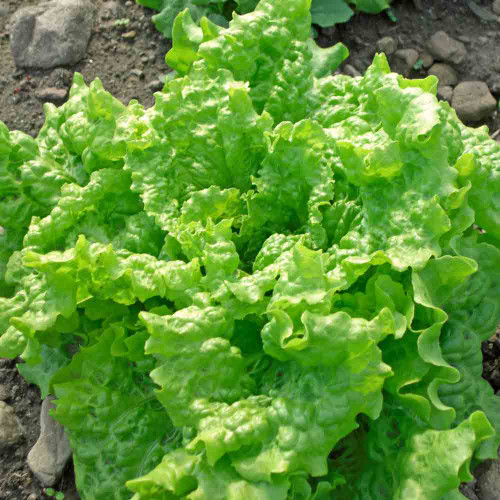Description
Bright Lights Cosmos - Radiant Beauty: A Feast for Bees
Every garden needs those carefree, resilient plants that deliver a spectacular show with minimal fuss. Bright Lights Cosmos is the epitome of this beauty, thriving on benign neglect, exploding in a season-long riot of gold, orange, and tangerine from average soil and little more than sunshine. But its easy-going nature has a powerful secret: it's a biodiversity magnet. While its flowers are busy feeding bees and butterflies to boost your crops, they are also calling in an army of beneficial predators like lacewings and parasitic wasps to help protect your nearby vegetables. This remarkable ability to be both effortlessly beautiful and a powerful ecological ally is why we believe it's an essential annual for any thoughtful gardener.
Details
Bright Lights Cosmos is a fast-growing, vivid annual and a member of the daisy family, characterized by its composite flower heads, or capitula, where numerous small florets are aggregated to form what appears to be a single bloom. Cosmos is related to other well-known garden plants like sunflowers, zinnias, and marigolds. This variety typically forms an upright, bushy clump reaching a mature height of 24-36 inches and a spread of 12-24 inches. Cosmos is often noted for sturdier growth compared to its cousins, reducing the need for staking and making it a more self-sufficient, lower-maintenance option.
The foliage is delicate and airy, with finely divided, fern-like leaves that create a soft backdrop for the brilliant flowers. This fine texture provides a soft counterpoint to the blooms' bold intensity, a contrast often likened to lace and fire. The semi-double flowers are the main attraction, measuring 2-3 inches across. It is celebrated for its luminous mix of warm colors, including gold, yellow, orange, tangerine, and occasionally red. It boasts a long and prolific blooming season, providing continuous color from early summer right up until the first frost. As a tender annual, it is suitable for growing in USDA Zones 2-11 during the summer months.
History
Cosmos sulphureus is native to Mexico and Central America, which explains its inherent adaptation to sunny, warm, and relatively dry conditions. Its flower heads were utilized as a source of yellow to orange dyes by pre-Columbian civilizations. The genus name, "Cosmos," was reportedly given by Spanish priests who cultivated the plants in their mission gardens, struck by the harmonious and orderly arrangement of the flower petals (from the Greek kosmos for order and harmony). It was introduced to Europe around 1799 but initially struggled in cooler English climates due to its natural tendency to bloom late in the season. Over time, plant breeders developed day-neutral varieties that bloom reliably all summer long.
The Bright Lights mix is a more recent open-pollinated cultivar representing a stabilized blend of the species' fiery color spectrum. In Europe, its ability to thrive in less-than-ideal conditions earned it the name peasant's flowers, proof of its democratic appeal and resilience—a beautiful flower accessible to all. Here in the US, its brilliant golden-yellow hues also led to the name Klondike Cosmos, likening it to a 'garden gold' rush.
Uses
Beyond its considerable ornamental value, this Cosmos mix offers a surprising range of uses beyond flowery beauty. The eye-catching flower petals are edible and are most commonly used raw as a colorful flourish in salads or as an attractive garnish for cakes and desserts. Their flavor is reported to be nuanced, ranging from slightly spicy to having delicate, sweet, nectar-like notes, inviting experimentation in the kitchen.
Historically, the flower heads were used to produce a brilliant natural yellow-to-orange dye for textiles. In the garden landscape, it is highly valued as a showy bedding plant, an excellent choice for borders, containers, and cottage or meadow gardens. It also performs wonderfully as a cut flower, with a vase life of 7-10 days for stems with multiple buds.
Companion Planting
Bright Lights Cosmos is a superb team player in an ecological garden, acting as a "biodiversity magnet." Its most significant role is attracting a host of beneficial insects. The open-faced flowers provide easily accessible nectar and pollen for vital pollinators, such as bees and butterflies, which can improve fruit set on nearby vegetable crops.
Crucially, it also attracts important predatory and parasitic insects, including lacewings, hoverflies, and parasitic wasps. The larvae of these beneficials are voracious consumers of common garden pests like aphids, making it a functional and beautiful guardian plant when interplanted in or near your vegetable garden. It is also noted for being deer resistant.
Planting and Growing Tips
Bright Lights Cosmos is famously easy to grow and thrives on what could be called "benign neglect." It flourishes in full sun (6+ hours per day) and, importantly, prefers average to poor, well-drained soil. Overly rich soil or excessive fertilizing will often result in lush, leggy foliage with fewer blooms. In regions with extreme summer heat, some afternoon shade is beneficial.
Seeds can be sown directly into the garden after all danger of frost has passed and the soil has warmed. Sow seeds shallowly, about 1/8 to 1/4 inch deep, and keep the area moist until germination, which is typically rapid (5-14 days). Thin seedlings to about 9-12 inches apart.
Once established, this cosmos is notably drought-tolerant and should be watered sparingly. To encourage a profusion of blooms and maintain a tidy shape, deadhead spent flowers regularly. If plants get leggy mid-season, don't be afraid to give them a "summer haircut," shearing them back by about one-third; they will typically respond with a fresh flush of growth and a second wave of flowers for autumn. For those who desire self-seeded plants for the following year, leave some flower heads on the plants to mature and disperse their seeds naturally.
You can easily enjoy Bright Lights Cosmos even in small spaces, as it is perfectly suited for container gardening. Its moderate mature height of 2-3 feet allows it to be comfortably housed in larger pots, and its tolerance for average soil means highly enriched potting mixes are not necessary. Ensuring adequate drainage is essential. This adaptability makes Bright Lights accessible to gardeners with limited in-ground space, such as those with balconies or patios.
Harvesting Tips
For cut flower arrangements, harvest stems when the flower buds have just begun to open; this will ensure the longest possible vase life. The best time to cut flowers is either early in the morning, after the dew has dried, or in the late evening when plants are most hydrated. For edible use, pick fresh, fully open petals when their color is most vibrant. For seed saving, wait until the flower heads on the plant turn brown and feel dry to the touch before clipping them and collecting the small, dark seeds.
Learn More
From the soil to the seed to the food you eat - we'll help you grow your best garden!















